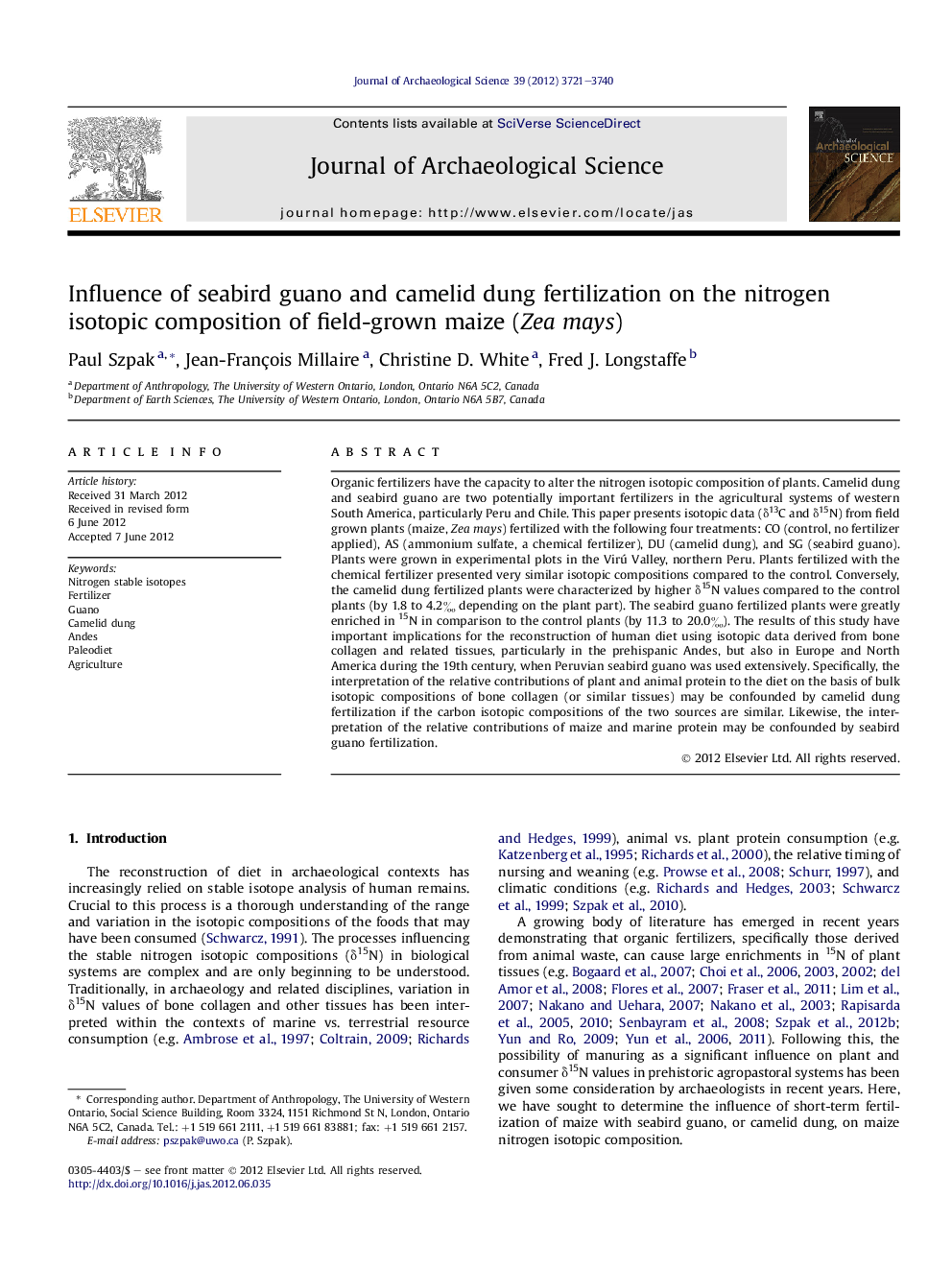| کد مقاله | کد نشریه | سال انتشار | مقاله انگلیسی | نسخه تمام متن |
|---|---|---|---|---|
| 1035664 | 943861 | 2012 | 20 صفحه PDF | دانلود رایگان |

Organic fertilizers have the capacity to alter the nitrogen isotopic composition of plants. Camelid dung and seabird guano are two potentially important fertilizers in the agricultural systems of western South America, particularly Peru and Chile. This paper presents isotopic data (δ13C and δ15N) from field grown plants (maize, Zea mays) fertilized with the following four treatments: CO (control, no fertilizer applied), AS (ammonium sulfate, a chemical fertilizer), DU (camelid dung), and SG (seabird guano). Plants were grown in experimental plots in the Virú Valley, northern Peru. Plants fertilized with the chemical fertilizer presented very similar isotopic compositions compared to the control. Conversely, the camelid dung fertilized plants were characterized by higher δ15N values compared to the control plants (by 1.8 to 4.2‰ depending on the plant part). The seabird guano fertilized plants were greatly enriched in 15N in comparison to the control plants (by 11.3 to 20.0‰). The results of this study have important implications for the reconstruction of human diet using isotopic data derived from bone collagen and related tissues, particularly in the prehispanic Andes, but also in Europe and North America during the 19th century, when Peruvian seabird guano was used extensively. Specifically, the interpretation of the relative contributions of plant and animal protein to the diet on the basis of bulk isotopic compositions of bone collagen (or similar tissues) may be confounded by camelid dung fertilization if the carbon isotopic compositions of the two sources are similar. Likewise, the interpretation of the relative contributions of maize and marine protein may be confounded by seabird guano fertilization.
Figure optionsDownload high-quality image (128 K)Download as PowerPoint slideHighlights
► A field study was conducted to examine the effects of Andean fertilizers on maize δ15N values.
► Maize δ15N values increased by 1.8 to 4.2‰ due to camelid dung fertilization.
► Maize δ15N values increased by 11.3 to 20.0‰ due to seabird guano fertilization.
► Camelid dung fertilization may complicate the identification of animal vs. plant protein.
► Seabird guano fertilization may complicate the identification of marine vs. terrestrial protein.
Journal: Journal of Archaeological Science - Volume 39, Issue 12, December 2012, Pages 3721–3740